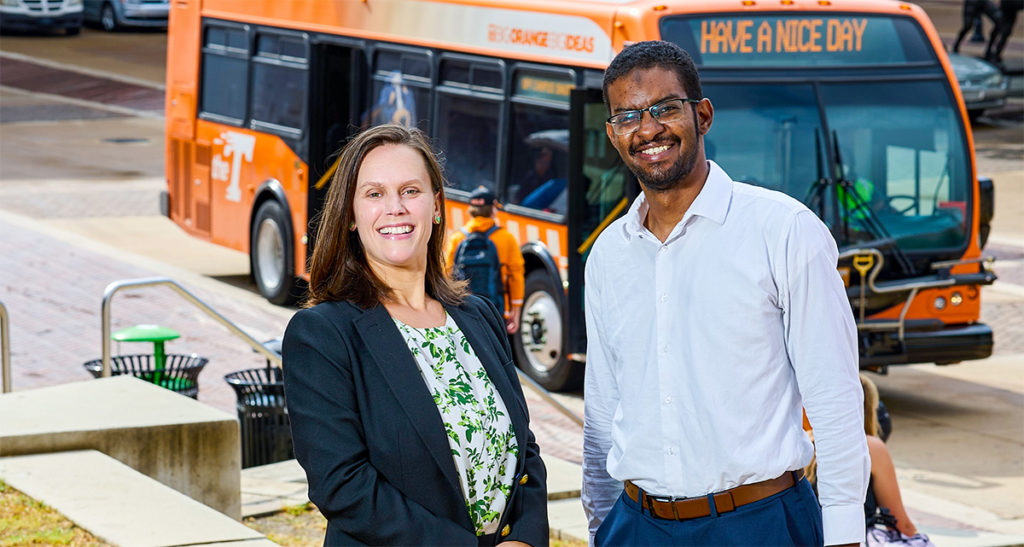by Andrew Faught. | Photography by Shawn Poynter.
COVID-19 wasn’t the only story to emerge from 2020. Public transit ridership hit a 100-year low—due in part to the pandemic but also to factors that civil and environmental engineering researchers are working to identify in hopes of fueling renewed demand.
As part of a $1 million US Department of Transportation effort, UT is one of four Tier 1 university transportation centers that will provide transit agencies with new insights into ridership trends to help them adapt more quickly to changing conditions. The other collaborators include lead institution Georgia Tech in addition to the University of Kentucky and Brigham Young University.
“The focus of the center is to try to understand why there have been declines in transit ridership, really over the last decade,” said Associate Professor Candace Brakewood.
“We’ve seen slow-to-steady declines prior to COVID-19, and we’ve seen massive declines since the pandemic began.”
Brakewood is leading the project’s community analysis track, which is researching which markets are most effectively served by public transit. A separate multimodal optimization and simulation track is considering which transit routes should be traditional, with fixed schedules, and which should be flexible and provided on demand.
Working with Brakewood are Professor Chris Cherry and doctoral candidate Abubakr Ziedan. The two-and-a-half-year effort will conclude in January.
While there have been upticks in transit use since the start of COVID, particularly among rail users, Brakewood says, “It’s still not at prepandemic levels in many cities. What we’re trying to understand now is why. And then try to forecast when it will actually recover. Right now, we don’t have a great answer.”
Besides Uber and Lyft, transportation alternatives such as scooter share services and electric bikes, both of which Cherry has researched, are thought to have an impact on public transit use.
Public transportation still is considered a linchpin for community mobility and a vital service for disabled and low-income populations. Further, the Department of Transportation credits transit networks for contributing to a healthier environment by improving air quality and cutting oil consumption and by encouraging better land use policies.
While ridership falloffs surprised researchers in 2020, the industry is recovering, albeit slowly, according to Brakewood.
She says the current moment is a critical time for self-reflection for the transit industry.
“It’s thinking about how the industry remakes itself,” she said. “What technologies do they need to be using? What types of policies should they be implementing? What changes should be made to the infrastructure, and where should new routes and track be going?”
In her community analysis work, Brakewood is researching fare capping, a practice used by a small number of transit agencies that ensures riders will not be charged more than the price of weekly or monthly passes.
“It’s trying to be more flexible and cater to the riders a little bit more,” she said. “I think that people will come back, but it may take a while. There is no easy answer.”
